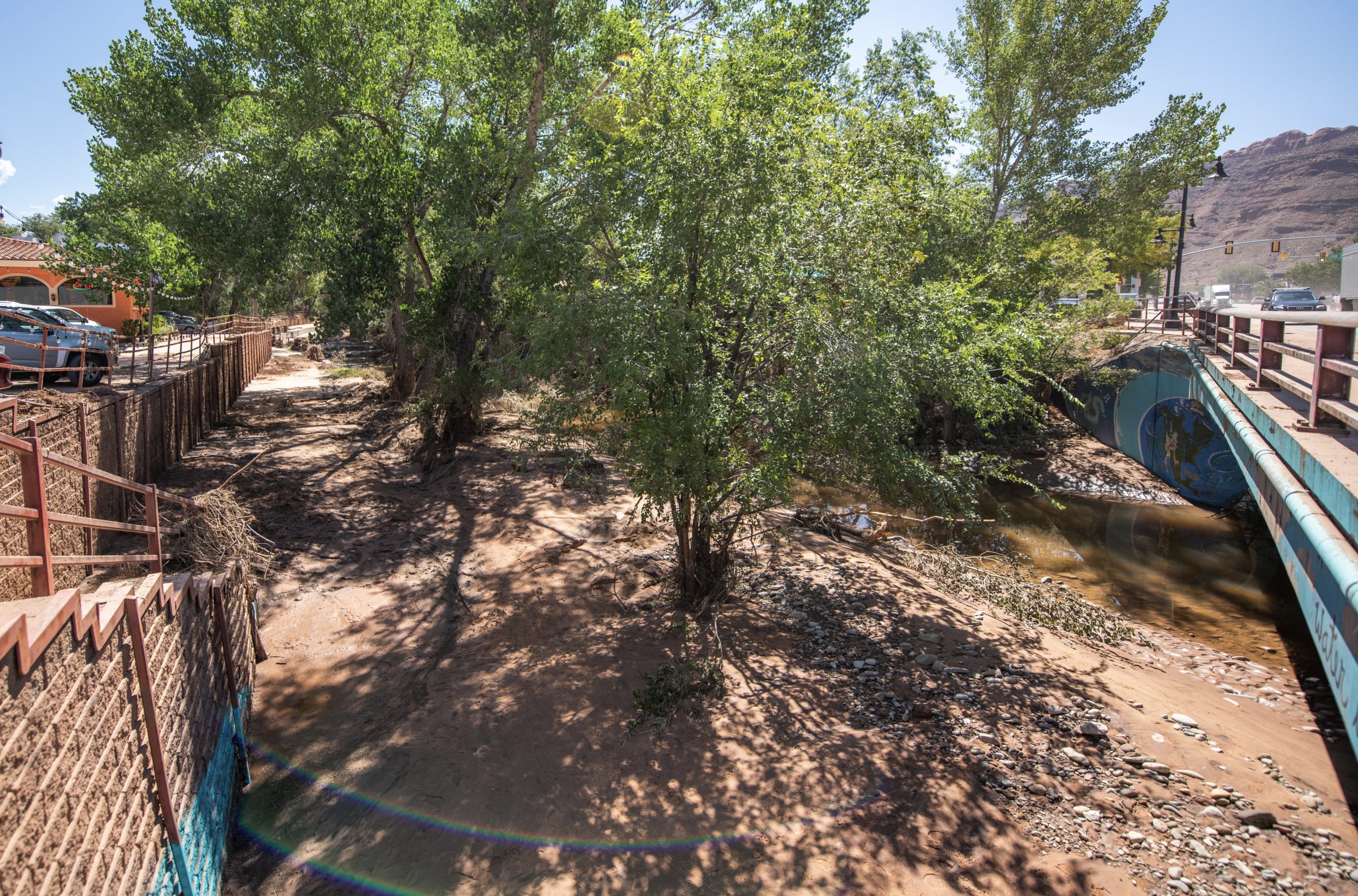Some information may be outdated.
After a historic flood caused damage to Moab businesses and infrastructure in August of last year, many people might like to move on and put it out of mind. But it’s Cora Phillips’ job to stay alert and think of how residents can be better prepared. She’s the Grand County Emergency Management director and she has a message for you: prepare now.
“We’re just trying to really get everyone prepared for potential flooding because of this serious snow pack,” said Phillips. “If you look at the snowpack report or the snow water equivalent for the mountains, to date it is the highest ever recorded, so we’re certainly concerned about spring runoff and watching the weather.”
After a record-breaking snow season across the state of Utah, the snowpack on the La Sal Mountains above Moab is around 200% of normal. According to the Natural Resources Conservation Service, as of March 1st, 10 of Utah’s SNOTEL sites were reporting the highest snow water equivalent in 30 years. The snow water equivalent is a measure of the fluid water which will flow into waterways when the snow melts.
While this is good news for alleviating the years-long drought, it’s causing concern about spring flooding statewide.
If the spring temperatures rise quickly with accompanying rains, the weather could speed up the snow’s melting process and overwhelm drainages.
“We want a gradual melt off during the spring that will not overwhelm our rivers and streams,” Candice Hasenyager, director of the Division of Water Resources, said in a press statement. “The way our snowpack melts is something our division and the Utah Division of Emergency Management is monitoring closely.”
“A high snowpack is a known risk, so we want to prepare the Moab community for potential floods,” said Phillips, “especially since other areas of the state are already starting to see flooding.”
In southern Utah, spring rains and high waterways have already caused search and rescue teams to be called out in some areas, and municipalities across the state are keeping an eye on reservoirs and swollen streams as temperatures rise.
Phillips’ department aims to unite and coordinate responses to disasters and catastrophic events to better inform and protect residents. One of the best tools, she says, is the free local emergency alert system offered at GrandCountyAlerts.org.
“Through this system, we can send out local messages that don’t qualify for the regional integrated alert and warning system,” she said.
For homes and businesses in likely flood areas, getting sandbags and keeping them on hand is an essential part of protecting your property. DIY sandbags are offered free of charge at the Moab City Public Works Yard (470 Kane Creek) or the Grand County Road Department (3500 South US 191).
“I’m also encouraging folks to look into flood insurance,” Phillips said. “It’s often not something that is covered under their normal insurance and most plans take 30 days to go into effect, so people should check into it earlier rather than later.”
The Utah Division of Emergency Management encourages clearing any nearby ditches or culverts of debris before any rains or runoff starts. “Often flooding happens due to debris rather than more water than could normally be handled,” a DEM release cautions.
As for Phillips, she will keep working to inform residents day by day, while keeping an eye on the mountains above.
“We have to prepare for likely floods. We hope the melt will be gradual,” Philips said, “but we have to prepare for it.”
More information on preparing for flooding can be found at www.floodsmart.gov.
Appreciate the coverage? Help keep local news alive.
Chip in to support the Moab Sun News.





